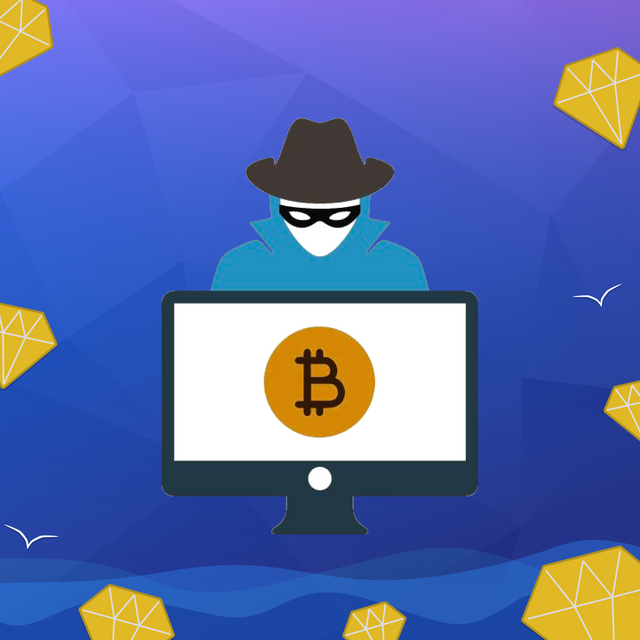
Cryptojacking, a cyberattack type, occurs when hackers leverage a device’s computational power without the owner’s consent. It is deployed through malicious software (malware) that infects your devices, aiming to utilize them for cryptocurrency mining. The prevalence of this issue surged during the 2017 crypto surge, with bitcoin and other cryptocurrencies’ values soaring, turning crypto mining into a lucrative venture.
The goal of cryptojacking is to utilize a device’s computational resources (usually processors or graphic processors) for cryptocurrency mining without the owner’s consent. Attackers aim to earn cryptocurrency through the resources consumed in the mining process, which can potentially become a lucrative source of income for them in the long term.
Let’s consider how this process typically works:
Infection:The attacker inserts malicious code into a website, online advertisement, or email attachment. Upon clicking on the infected content, the code activates and infects the user’s device.
Mining Script: The inserted code includes a mining script, typically for a cryptocurrency like Monero, which uses the device’s processing power to mine coins.
Resource Utilization: The mining script operates discreetly, utilizing the device’s CPU or GPU resources to solve complex mathematical problems necessary for cryptocurrency mining.
Mining Rewards: Any cryptocurrency mined is directed to the attacker’s wallet, providing them with a revenue stream while consuming the victim’s resources and electricity.
Detection: Detecting cryptojacking can be challenging as it often doesn’t cause noticeable performance issues. However, victims might observe slower device performance, increased heat generation, or higher energy bills.
Cryptojacking is an integral part of modern cyberthreats, and understanding its mechanisms and defenses is key to staying safe in the digital world.
Types of Cryptojacking
There are several main types of cryptojacking, each using different methods to execute the attack and profit from cryptocurrency mining without the device owner’s consent. Some of the most common types of cryptojacking include:
Browser-based Cryptojacking:
JavaScript Mining: Hackers embed malicious JavaScript code directly into web pages or advertisements. Visitors to these pages automatically start the mining process on their devices when they open such pages.
Browser Extension Usage: Attackers create malicious browser extensions that can automatically initiate the mining process on the user’s device.
Malware-based Cryptojacking:
Using Malware: Attackers infect computers and other devices with viruses or malware that then initiate the mining process without the owner’s knowledge.
Script Execution at Startup: Some malware automatically launches the mining process upon device startup, thereby concealing its activity from the user.
Both forms of cryptojacking pose risks to victims, potentially resulting in higher energy costs, diminished device functionality, and, in certain instances, lasting hardware impairment caused by excessive heat.
The Impact of Cryptojacking on Infected Computers
Cryptojacking can have several negative impacts on an infected computer.
Increased Energy Consumption:
Cryptojacking significantly increases the energy consumption of infected computers. The mining process requires substantial computational resources, leading to higher electricity bills for users.
Decreased Performance:
The malicious code executing the mining process consumes the device’s computational power, resulting in decreased overall performance. Users may experience slower application response times and general system sluggishness.
Overheating and Hardware Damage:
Intensive resource usage without adequate ventilation and cooling can cause components to overheat. This poses a risk of hardware damage, including processors, graphic cards, and other critical elements.
Loss of Confidentiality and Security:
Certain forms of cryptojacking may open backdoors for additional attacks or enable the theft of confidential information. This jeopardizes user data security and privacy.
Financial Losses:
Besides increased energy consumption, cryptojacking can lead to financial losses due to higher electricity bills and potential costs for repairing or replacing damaged hardware.
The comprehensive impact of cryptojacking on a computer depends on various factors, including the intensity of the attack, the device’s resource capabilities, and the security measures taken by the user.

Security for Miners: detecting and preventing cryptojacking
Detection and prevention of cryptojacking require a combination of technical measures and user awareness. Here are some methods for detecting and preventing cryptojacking:
Use Antivirus Software:
Install reliable antivirus software with capabilities to detect malicious scripts and programs associated with cryptojacking. Regularly update virus signature databases.
Monitor Resources:
Track the resource usage of your computer or device. If there is an unexplained increase in CPU or GPU load, check the system for malicious scripts.
Block Unauthorized Domains:
Use software to block access to known domains and IP addresses associated with cryptojacking. This helps prevent the loading of malicious scripts.
Update Software:
Regularly update operating systems, browsers, and other software to the latest versions. Vulnerabilities in outdated software versions can be exploited by attackers to inject cryptojacking scripts.
Beware of Phishing:
Be cautious when opening emails, files, and links from unknown sources. Phishing attacks can be used to distribute malicious scripts.
Use Ad-Blocking Extensions:
Consider using ad-blocking extensions in your browsers. Some of them can automatically block scripts used for cryptojacking.
Enhance Cloud Security:
If you use cloud resources, ensure enhanced security measures. Use strong passwords, enable two-factor authentication, and monitor activity to detect suspicious actions.
Following these tips will help miners strengthen their protection against potential security threats and keep their assets and data safe. Remember the importance of being vigilant and responding to threats in the cryptocurrency environment.
Conclusion
In summary, cryptojacking remains a major concern in 2024, with cybercriminals persistently taking advantage of unaware users’ devices for mining cryptocurrencies. The development of this harmful activity highlights the critical need for strong cybersecurity protocols. With attackers adopting more advanced methods like fileless malware and precise attacks, it’s crucial for users to stay alert and enforce solid security practices. This involves keeping software updated, utilizing trusted antivirus software, and exercising caution when encountering dubious links or downloads. Use only proven mining software, customize your miners according to the guides to make sure they work properly.